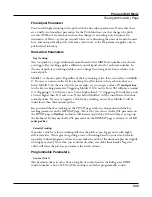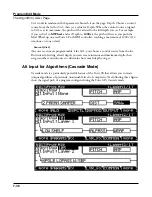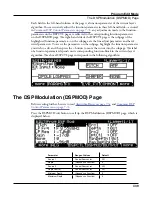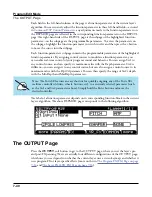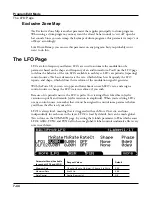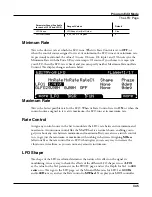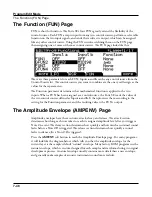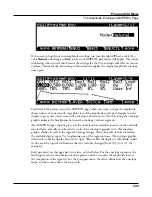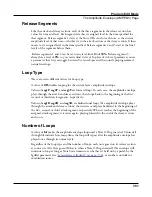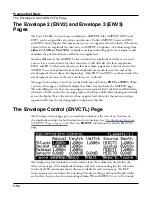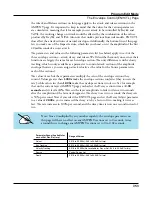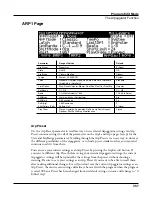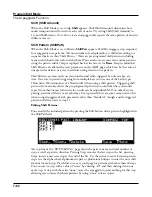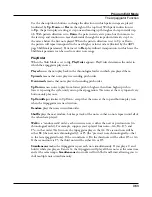
Program Edit Mode
The Function (FUN) Page
7-48
The Function (FUN) Page
FUN is short for function. The Forte SE’s four FUNs greatly extend the flexibility of the
control sources. Each FUN accepts input from any two control sources, performs a selectable
function on the two input signals, and sends the result as its output, which can be assigned
like any other control source. Using the FUNs involves defining them on the FUN page,
then assigning one or more of them as control sources. The FUN page looks like this:
There are three parameters for each FUN. Inputs a and b can be any control source from the
Control Source list. The control sources you want to combine are the ones you’ll assign as the
values for these parameters.
The Function parameter determines what mathematical function is applied to the two
inputs. When a FUN has been assigned as a control source, the Forte SE reads the values of
the two control sources defined as Inputs a and b. It then processes them according to the
setting for the Function parameter, and the resulting value is the FUN’s output.
The Amplitude Envelope (AMPENV) Page
Amplitude envelopes have three sections: attack, decay, and release. The attack section
determines how long each note takes to reach its assigned amplitude level after you trigger a
Note On event. The decay section determines how quickly and how much a sustained sound
fades before a Note Off is triggered. The release section determines how quickly a sound
fades to silence after a Note Off is triggered.
Press the AMPENV soft button to reach the Amplitude Envelope page. For many programs,
it will look like the diagram below, which tells you that the amplitude envelope for the
current layer is the sample’s default “natural” envelope. Many factory ROM programs use the
natural envelope, which is custom designed for each sample and waveform during its original
development process. A natural envelope usually contains more detail than a user envelope,
and generally make samples of acoustic instruments sound more realistic.


